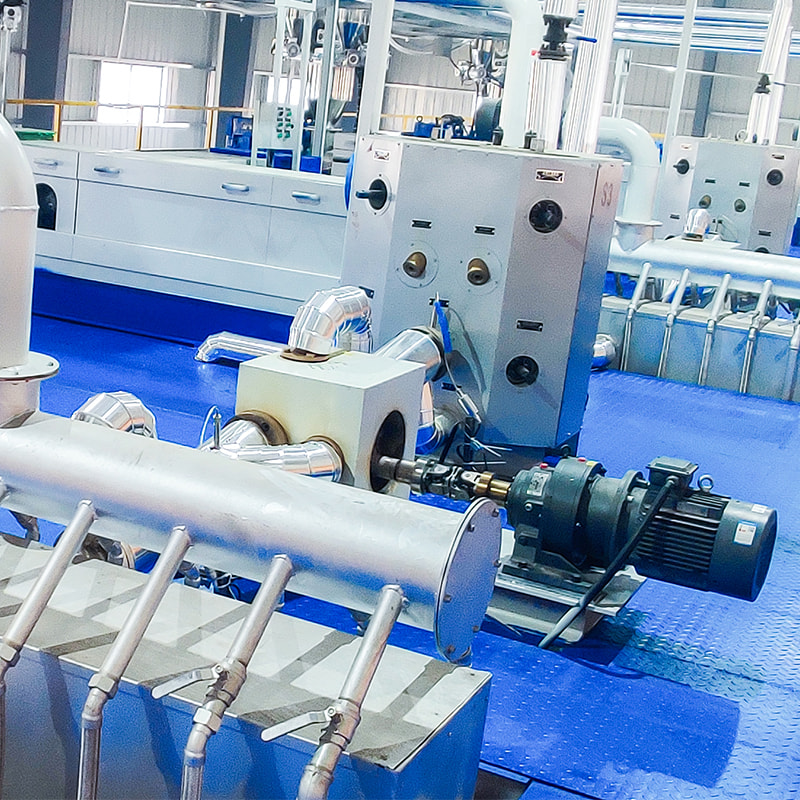Ensuring Longevity and High-Speed Performance of the SMMSS Nonwoven Fabric Machine
The SMMSS PP Spunbond Nonwoven Fabric Machine is a highly efficient and reliable piece of equipment for producing high-quality nonwoven fabrics. With its high-speed capabilities—ranging from 10 to 350 meters per minute—this machine is built to meet the growing demands of industries producing medical supplies, hygiene products, geotextiles, and more. However, like any high-performance industrial equipment, questions often arise about how the machine performs under prolonged, high-speed operation, and whether there are common failure points to be aware of. The machine’s performance, longevity, and reliability depend on several factors, including its engineering, regular maintenance, and the operating conditions it is subjected to.
Under long-term, high-speed operation, the SMMSS machine excels in terms of consistency and fabric quality, thanks to its precision engineering. The use of CNC technology for producing the main components ensures that every part is meticulously crafted for durability and optimal performance. The dynamic balance machine used to manufacture the rollers also plays a key role in ensuring smooth operation even at maximum speeds. This design helps minimize vibrations and prevents uneven wear, contributing to the machine's ability to sustain high-speed operation over extended periods. However, the true test of a machine like this comes in its ability to maintain these high standards over time.
One of the most common failure points in high-speed nonwoven fabric machines is related to the wear and tear of key mechanical components, especially the rollers and drive system. The rollers, despite being dynamically balanced, can still experience surface degradation due to constant friction and heat generation. As the machine operates at speeds of up to 350 meters per minute, the heat buildup in the system increases, which can lead to overheating of parts like bearings, rollers, and motors. If not regularly maintained, this can cause the parts to degrade faster than expected, leading to increased downtime and potentially costly repairs.
Another critical area to monitor in high-speed operation is the motor and drive system. The SMMSS machine utilizes high-quality Siemens motors paired with Siemens or ABB drivers, both of which are designed to handle the stress of long-term use. However, these systems can still experience strain under constant high-speed operation, especially if the machine is pushed to its limits day in and day out. Over time, excessive wear on the motor components—such as brushes, windings, or capacitors—could lead to performance issues. It's essential to ensure that the electrical system is regularly inspected to prevent sudden failures that might cause production delays.

The slitter system integrated into the machine, which allows for cutting the nonwoven fabric into custom widths, is another potential failure point in high-speed production. The precision of the slitting process is crucial for ensuring fabric quality, and with continued operation at high speeds, the blades or cutting mechanisms may require frequent adjustments or replacements. Any misalignment or dulling of the blades can lead to uneven cutting, which may affect the final product’s quality. Additionally, the tension control system, which ensures the fabric is pulled evenly through the machine, can be compromised if not maintained properly. This can cause fabric inconsistencies or defects during production.
While these are some of the most common mechanical and operational challenges that users may face, the SMMSS PP Spunbond Nonwoven Fabric Machine is designed with reliability in mind. The use of high-quality components from reputable suppliers, such as Siemens and ABB, contributes to the overall durability and longevity of the machine. However, like all complex machinery, it requires regular maintenance to ensure that it continues to operate smoothly and at peak efficiency. Routine inspections of the motor, rollers, slitter system, and tension controls, as well as the cleaning and lubrication of moving parts, are critical for minimizing the risk of failure and extending the machine’s service life.
The machine’s performance under long-term, high-speed operation can be impressive when properly maintained. With its robust construction, advanced motor control, and precise engineering, the SMMSS machine can continue to produce high-quality nonwoven fabrics consistently. However, users should be aware of potential failure points such as roller wear, motor strain, and slitter blade degradation. By adhering to a rigorous maintenance schedule, using high-quality materials, and ensuring the machine is running within its optimal parameters, operators can avoid most common issues and maximize the return on investment in this high-performance equipment.







 English
English 中文简体
中文简体 русский
русский عربى
عربى





